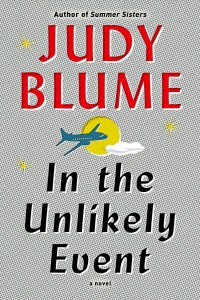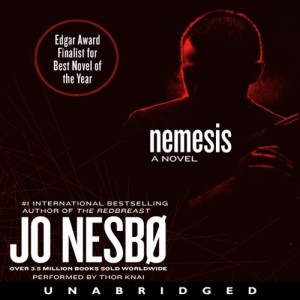I finished season 1 of Yellowjackets last night. The character Taissa Turner is running for office and does not have an election night party! Unable to maintain suspension of disbelief with something so blatantly wrong.
Category: Reviews
Reviews of restaurants, movies, etc.
Hundreds of Beavers
I watched Hundreds of Beavers on Kanopy (courtesy of SFPL). I didn’t find it as funny as a lot of other people seemed to. To me, it would have been better if it had been cut back 20-30 minutes, as the gags felt repetitive to me.
November 2015 Reading
And here’s the books I’ve read since my last reading update.

Sundown Towns by James Loewen
James Loewen is the well-known author of Lies My Teacher Told Me which is an excellent primer on the portions of history that aren’t really covered in school. Sundown Towns is his treatment of the practice of counties, towns, and suburbs that intentionally excluded blacks and other non-whites from living within their boundaries. Such towns popularly had signs at the city limits that stated things like “No niggers after sundown!”, hence the term.
I listened to the audio version of the book. I’ve found that in audio form, repetition in a book is really drilled into my brain. In a work of fiction, repeated story tics become extremely apparent and are distracting. In a book like Sundown Towns the sheer number of examples of sundown practices is a flood in my brain. I didn’t think about much else for the duration.
And Loewen’s examples in the book alone become a litany. The conception I, a suburban-educated middle-aged white guy, had was that they were ugly but not particularly common. The best examples Loewen has litter Illinois and Indiana to the point that non-exclusionary towns were in the minority in those states. In addition, descriptions of the practices themselves make me think that the North’s sundown towns were far more racist than the South’s Jim Crow laws. That’s an outside assessment by a white dude after reading this book, so I don’t think it holds a lot of weight. But I think it’s clear that us northerners can’t be smug about the South being the racist part of the country, which I often have been.
My criticism of the book is mostly that a lot of the book is based off hearsay and oral tradition. As far as a broad survey that this book is means that it doesn’t affect the conclusions on a broad basis. That there’s an oral tradition of a place being sundown is part of sundown practice itself. But when I am concerned about a specific place and the practices there, hearsay leaves a lot to be desired. I am very interested in specific places where my family is from. More than one is mentioned in the book, and I wanted to know way more than what oral tradition could pass on.
The Dark Tower: The Gunslinger by Stephen King
My ebook reader told me I was 56% of the way into this book at the point I gave up. In theory, mixing epic fantasy with Westerns should delight me, but in practice I was bored despite giving it a go. Roland Deschain is the gunslinger in a desert landscape, possessing some wizard like powers, chasing after a mysterious man in black. Why? We don’t know. Sometimes mysterious means my interest is piqued to find out more, but in this case it meant I couldn’t bring myself to care about one-dimensional mystery characters.
Skipping a Beat by Sarah Pekkanen
A rich woman’s rich husband has a heart attack and spends some time clinically dead. On revival, he has realized that his distant workaholic ways can’t go on, so he resigns from the company he founded and starts giving away all his wealth, vowing to pay his wife the attention he should have over the years. Rich woman doesn’t take too kindly to this, as she views the wealth as her payment for putting up with rich dude’s years of neglect. Will they reconcile? Will things get really ugly? Engaging enough that I wanted to find out what happened, but I didn’t like either main character and mostly wished ugly things would happen to them. Minor spoiler that this is a redemption story, though not in the way I thought it might be. Still, I would have preferred ugly things happen to the characters.
Libriomancer by Jim C. Hines
Another fantasy book. It came highly recommended by a friend of mine. I also have followed Hines’ blog for many years and I really like that. However, it’s the first time I’ve tried to read a story of his. Libriomancers are basically wizards who have the power to turns what happens on the pages of a book into something in real life. Need a ray gun? Find old science fiction and go through the proper magical steps and it’s yours for a time. Of course there are opposing factions fighting a magical war. We need some sort of conflict in order to have a book, but this was so cookie cutter. Too much as-you-know-Bob. Too breezy. I gave up very quickly. I might try Hines’ work again some time, because I want to like his books because I love his blog. But I’m not hopeful.
September 2015 reading
I was away on holiday most of September, and that meant that I had a lot of travel time to listen to audiobooks. Brief notes follow, so I can remember what I read in my older age.

In The Unlikely Event by Judy Blume
I remember getting crap from girls in junior high when I read Are You There God? It’s Me Margaret. “But that’s a girl’s book!” The thing is, Judy Blume writes compelling characters, and so I liked the book despite it not being for boys. In The Unlikely Event follows a lot of characters living in Elizabeth, New Jersey in 1952, when three planes crashed in the suburb while trying to take off or land at the nearby Newark airport. This isn’t a set of tales of surviving as told by the victims of the crashes or their family members (mostly). It captures the daily lives of witnesses, bystanders, and responders. A lot of it is just normal stuff, but Blume uses the crashes as a device to expose their psyches. Very enjoyable, though a bit hard to keep who is who and how they are connected straight sometimes.
The Devil’s Star by Jo Nesbø
The concluding volume in the three book storyline of Harry Hole vs. the evil cop Tom Waaler. At the beginning of the novel, Hole is on his last legs as a detective. He’s convinced that Tom Waaler is behind the murder of his colleague Ellen Gjelten (in The Redbreast). Unable to prove it, he’s gone on an alcoholic bender that has his superiors draw up his termination papers. Even though he has only three weeks left before they are final, the brass has him work a case with the aforementioned Tom Waaler investigating a serial killer who leaves pentagrams at murder scenes. The reader, Harry, and Tom all know Harry’s got Tom pegged but has nothing to back it up. So how will they work together? Given that Tom Waaler has a history of murdering people who might finger him in the two previous books, I’m surprised he didn’t do the same to Harry Hole at the beginning of the book. But then, there wouldn’t be a story anymore, so we have to suspend some disbelief. Lots of tension here, and worth a listen.
How To Be Black by Baratunde Thurston
Part memoir, part humorous “self-help” on race relations. The self-help is ostensibly directed at black people, but it didn’t really feel like that was his true audience. It really comes across more as a way to explain to white people what tics black people have developed as a result of micro-aggressive racism from white people, and what methods they’ve devised in order to deal. I don’t think the latter part meshed all that well with the memoir part. You constantly jump between intensely personal memoir chapters to more distant “hypothetical” how-tos on race. Hypothetical in quotes because, while I am sure the situations are all real, Mr. Thurston doesn’t talk about them in first person voice or even third person description of what’s happened to people he knows. Those parts are in second person. Still, had those points been made how we normally make them, the book might not have garnered the attention it did. I liked the personal bits more though, particularly the writing about Sidwell Friends and race relations at that school.
August 2015 reading
And here’s what I’ve finished reading since my last update in May.

Nemesis by Jo Nesbø
I consumed this one also in audio format. Replacing Robin Sachs as narrator was Thor Knai, and I quite enjoyed his reading. Audible reviewers didn’t like him, and he was very rough. But I was happy to hear Norwegian words and names pronounced like Norwegians do. Harry Hole works to solve both the murder of a bank teller in the course of a robbery, as well as the putative suicide of an ex-girlfriend with whom he’d recently been in contact. This is all about the Scandi-crime vibe, as both murder mysteries are of the extremely intricate variety that makes me repeatedly exclaim “Oh come on!”. Those only work as crimes if everything goes exactly as planned. They should fall apart well before Harry Hole gets involved.
Galileo’s Middle Finger by Alice Dreger
As I noted over on the book blog, one of the things I think should be included in any review of non-fiction is whether or not the stuff in the book is true. Ms. Dreger’s story is engaging and probably informative at some level. However, even a cursory listen to the audiobook raised some huge red flags for me. A large portion of the book is about conflicts between activists (mostly left-leaning) and scientists (supposedly fact-based) where the scientists lives have been ruined because the activists had no regard for the truth and also made personal attacks removed from the issues about the science. But… aside from some nastiness on the internet, not one of the scientists described had their life ruined. Not one lost a job. Not one had to live in hiding. Which isn’t to say scurrilous charges of unethical science should be encouraged, but I think her premise on the “ruined lives” front wasn’t backed up.
Central to Ms. Dreger’s book is the account of J. Michael Bailey and his book The Man Who Would Be Queen. In it, Mr. Bailey presented another researcher’s theory of transgender as transsexualism, that transgender people are of two main types: effeminate homosexuals and autogynephiliacs, or men who are turned on by the idea of being being women. Here’s the thing about Galileo’s Middle Finger: it presents the theory as being backed by science and so Mr. Bailey’s book was scientific and the attacks on him were activism. But I couldn’t help notice while listening that there’s little discussion in it of research that backs up the theory. It comes off as both Bailey and Dreger making up some sloppy categories to fit their notions and then working hard to slot transgender people into those categories. And that’s just from a cursory listen to the book. So the narrative of science versus activism didn’t hold up in my view, because there wasn’t much science described.
A few other chapters cover Ms. Dreger’s work on intersex people and intersex rights. As a narrative of her involvement nothing stood out as poorly as the activist vs. science part did.
I wouldn’t warn people away from the book, but I’d read it all with a huge grain of salt.
Mending the Moon by Susan Palwick
I’ve been Facebook connected with Susan Palwick since I purchased a hand-made scarf from her in 2014’s Con Or Bust fundraising auction. I subsequently read her book Shelter and quite liked it. She was in Seattle in July for Clarion West, and so I went to her reading and picked up Mending the Moon. Though published by Tor, it’s not heavily science fiction. Melinda Soto goes on vacation to Mexico where she is brutally murdered by a young fan of the comic book Comrade Cosmos. Melinda’s son is also a big fan. The book is the story of the characters’ grief processes. I had a mixed reaction to the book. On one hand, very little happens and I kept wanting some plot progression. But on the other hand, the characters are fascinating and the best portrayal of the many faces of grief that I’ve ever read. As someone who went through the deaths of my three closest family members in the course of 18 months, I learned a lot about my own grief. I very quickly became acquainted with other people’s stereotypes of grief and how I wasn’t doing it right. Each character in Mending The Moon has their own reaction, and all of them felt very real. Not one is the right way to do it. Highly recommended for these portrayals.
May 2015 Reading
For nearly a decade, I blogged about the books I read, first on LiveJournal, then on a couple of blogs. But I tired of it and stopped. Lately I’ve been missing it and I’ve started forgetting what I’ve read again (if I write about what I read, I remember it better), so I’m going to attempt to do a monthly reading roundup here.
What I tried to read in May 2015:
Scale-Bright by Benjanun Sriduangkaew
This was a did-not-finish book. I’ll try this one again some day, as I think I just wasn’t in the right head space. I couldn’t keep track of who was who when my mind has been on other things.
Tambora by Gillen D’Arcy Wood

Basically each chapter is devoted to a disaster that was probably caused by the Tambora eruption, framed by stories about Mary Shelley’s literary circle. For example, a chapter about crop failures in a Chinese province leading to farmers picking up opium production to survive and thus starting the international drug trade is introduced by the story of Mary Shelley’s brother dying of an opium addiction. The crop failures in question being the result of the three-year-long global cooling from Tambora’s eruption. A lot of interesting stuff, and I like disaster porn particularly when it’s several hundred years old so I don’t feel too much like a ghoul.
This reminded me that I had never read Frankenstein, so …
Frankenstein by Mary Shelley
Victor Frankenstein is a tedious, negative asshole. He spends years learning how to create life, and as soon as he’s done so decides the creation is an abomination and sets about abandoning it. Also, at the slightest thing gone wrong, he manages to spend months sick and feeling sorry for himself.
A Stranger In Olondria by Sofia Samatar
This was also did-not-finish. Eight chapters in, I hated the protagonist and nothing happened. The writing is beautiful, but it was just slow.
The Girls Of Atomic City by Denise Kiernan
I thought this would be a Rosie The Riveter story of what women were doing on the home front for the Manhattan Project. It may have eventually gotten to that, but I gave up on the audiobook well before then. Just too much of everyone’s back story before it ever got to what people did at Oak Ridge.
The Big Bang Theory by Karen Fox
A really enjoyable dive into cosmology and details of various versions of the Big Bang theory, but I felt somewhat duped by Audible, as it slapped a publication date of 2010 on it, when the book was published in 2002 (the audiobook came out in 2010). There were numerous references to experiments due to be completed in the 2002-2007 time frame that by now have been completed. A lot of the discussion of dark matter didn’t incorporate news I’ve read about dark matter and had hoped to get an understanding of. The book was just too dated for 2015.
Coyote Rising by Allen Steele
Fun story, but man oh man did this seem to fetishize an American-style frontier, the antebellum American South (Robert E. Lee was fighting for freedom or something), and really rags on a straw-man version of socialism that the book calls social collectivism
. Story-wise this was escapist fun. With regard to the themes and politics, it was one-dimensional.
A Good Day To Die Hard The Hobbit
Yesterday I was really in the mood for a bad action movie, so I saw A Good Day To Die Hard. I haven’t seen a movie in the theater since November (I think). But I really wanted some explosions, car chases, and a plot that made almost no sense whatsoever. Die Hard delivered. John McClane (MacClain? I dunno how they spell it and I don’t really care either) heads to Russia where his son he hasn’t seen in years is about to go on trial for some sort of drug charge. Total white knight. But John McClaine Jr. is actually C.I.A. and being in jail is part of their complicated plan to bring down the incoming Russian defense minister. Sr. screws that up by distracting Jr. and then they have to start killing bad guys. Sadly, there’s only one car chase, which occurs near the beginning of the film. Lots of explosions and dodging bullets though, including dodging being shot at by a giant gun on a helicopter that shoots lit up bullets. Very satisfying.
Mind you, it’s really nothing like the original Die Hard, which was a different kind of action movie. A Good Day To Die Hard is really the same old action movie.
Today I went and saw The Hobbit. Bleah. Awful movie. I don’t really remember a lot of the book, but there’s a lot of stuff added in the movie. Most of the added stuff I didn’t like. Where the hell did the pale orc nemesis come from? I don’t remember that in the book. Did the movie really need a nemesis in order to make the show palatable? I don’t think so.
Unlike Die Hard, I wanted these things to make sense, and they just didn’t. Why were the dwarves fighting the orcs, other than the set up the nemesis relationship? No reason. Oh yeah, and the son of the dwarf king goes and fights orc who have nothing to do with Smaug the dragon who took over the dwarf redoubt. Why had the pale orc sworn to end the dwarf king’s line in particular? Why does he care? Just dumb. That’s merely one example.
And oh my god was this movie slow. I don’t mind the flashbacks. That didn’t seem to slow things down. But there were interminable talking and speechifying scenes that added nothing. And unnecessarily long scenic shots. And C.G.I. chase scenes that were just too damn long.
Needless to say, I am extremely unlikely to be catching in the theaters the last 6 fucking hours of this story that will comprise the second and third movies of a series that really shouldn’t have been a series.
Lillies Of The Valley and Pina
The largest amount of time I spend listening to music these days is on KCRW‘s web site. I don’t know why exactly, but I really dig their music taste lately. Last week though, they had a pledge drive. So I turned to their all-music channel Eclectic24 for the duration. And that’s where I caught the piece above. It’s called Lillies Of The Valley according to the KCRW web site. I had to buy it.
Looking for it, it is on the soundtrack to the documentary Pina by Wim Wenders. But it isn’t available for purchase without buying the whole album. Seriously? Okay. Searching around today though it appears another version of the song, Alviverde, is available. It has lyrics though.
I did pull up Pina on Netflix though. It’s about Pina Bausch, who was a dancer and choreographer, who died just as filming on the documentary started. Now, to say I am unfamiliar with modern dance would be understating things. At the handful of modern dance performances I have attended I generally give the okay face
. I just don’t get most of it.
But the pieces that were featured in the documentary? Whoa. I still don’t know what I watched, but that was way interesting. If Tanztheater Wuppertal Pina Bausch ever tours around here, I want to know about it so I can attend. If you have Netflix, go watch at least a part of that. Totally mesmerizing.
Cabin In The Woods
My headspace has been awful this week, and today in particular. So today I decided to head to the old multiplex and immerse myself in someone else’s story for a bit. Movies are good for that for me. It doesn’t last, but for 90 to 150 minutes I am totally not thinking about my own problems.
Anywho, Cabin In The Woods has been called in various places a meta-horror
movie. The Slut, The Jock, The Scholar, The Idiot and The Virgin all head to a cabin in the woods for a weekend of shenanigans. They all have names, but so much do they fit the cliche that I’ve totally forgotten them already. But, as in all horror movies, things start trying to kill them one by one. The twist in this case (and it happens really early on, so I’m gonna spoil it) is that there is a control room of people orchestrating the horrors that befall the young coeds. Cameras. Remote controls. Etc. Like a reality show gone really wrong.
Does it succeed as a horror movie? I’m not really one to judge as I don’t watch a lot of them, but it wasn’t all that scary. I’m glad for that, as I don’t like to be scared. Because it follows the horror movie script for much of the time, you really know what’s going to happen. It certainly does something different in terms of plot after the first two thirds. So it gets some points for originality.
Does it succeed as meta-horror
? I don’t think so. It sure points out how much horror falls into script. It seems rhetorically similar to if it had a character break the fourth wall and tell the audience that we’re gonna follow the horror movie script. It’s really not spoofing, as it’s done not so much to make fun of the horror script so much as to give everyone in the audience a knowing wink.
It most certainly doesn’t subvert the tropes at all. There’s one scene where typically the Slut bares her breasts. The control room people (male) hope for it, and then stare slack-jawed as if they never get the opportunity to see bare breasts. They are trying to orchestrate her death. I’m all for showing boobs in movies (even gratuitously), but that was uncomfortably creepy.
Xoom – Initial thoughts

I bought myself a new toy on Monday, a Motorola Xoom. I got the 3G version rather than the WiFi only version. It’s possibly I could get by with the WiFi version, as my track record with my smart phone is that I rarely use much cell phone data with it, and I’ll be carrying the Xoom around less. I’ll be taking it with me to Madison at the end of the month, so we’ll see how much cellular data I use on the trip. If I don’t need it, I’ll cancel my wireless data plan. I paid full price, rather than the subsidized price, so that I wouldn’t get hit with an early termination fee if I ended up doing this.
Here’s some initial thoughts.
The form factor is mostly nice. It’s a little bit on the heavy side to hold up for extended periods of time. For reading, for instance, I’ll be propping it on my lap or something like that. It wouldn’t be so bad if there were a little stickum on the back to make gripping it easier.
I also bought the multimedia dock for it. The Xoom does not slide easily onto it like my Droid slides onto its dock. It usually takes me a bit of working it to get it to settle onto the USB and HDMI sockets.
The graphics are really crisp. The browser appears to be a limited version of Chrome, with way more features than the browser on Android smart phones. I really like the new Gmail application, which is good because K-9, which I use on the Droid, doesn’t work well in tablet size. The GMail application still lacks the ability to save attachments unless they can be opened by another application though. That really sucks. However, the web version of Gmail is accessible, and I can save files from it.
There aren’t a lot of tablet sized applications for it it yet. A few of my applications that I use on my Droid don’t resize at all. Some resize, but badly. Most of them are set to use the standard Droid application buttons. Those buttons don’t exist on the Xoom. Instead, they are put inside some on-screen menu spots. Those spots are not convenient to my thumbs when holding the tablet by the side. In particular, the Google Reader application is cumbersome to use because of this. If it had gesture controls, it would work much better. Applications really need to have gesture/swipe controls on a tablet.
When applications for the tablet do not auto-rotate, it’s even more of a pain than when they don’t for a smart phone. The application market only works in landscape mode. Some of my applications only work in portrait.
I installed the Flash plugin. Most web site flash stuff is a pain with a touch screen. It’s also not very responsive on the Xoom hardware. Provided I can press a button or something like that in a Flash application, the computer won’t respond to that press for several seconds at least. Luckily, even with the plugin installed, I can set the browser to only run Flash applications I click on.
Battery life is really pretty good so far. I can read news with Google Reader and my standard web sites for about 90 minutes, and the battery level drops from 100% to 87%. Flash sucks the battery, even when it’s just a container to play video. Supposedly video actually doesn’t kill the battery when viewed in a native application, but I haven’t tried that yet other than a couple of short Youtube videos.
Even though it’s on the Verizon cellular network and it nominally uses a phone number, I can’t use it for phone calls (not surprising) or even text messaging (a little surprised by that). I can’t even install the Google Voice application only to listen to my voice mails. I can use the Google Voice web site at least. The lack of text messaging means I can’t install Mobile Defense, which is the application I put on my Droid that lets me track it remotely (and control it remotely too).
I have installed six different book applications on it. This was the reason I bought the thing. My Nook died hard after Guinevere knocked it off the shelf. Rather than stick with one book platform, I could use all of them and buy a book wherever it was cheapest. Or even available. So I have the Nook and Kindle applications. The Nook application uses gestures for reading, so I’m happy there. I haven’t tried the Kindle application yet. It also comes standard with the Google Books application, which I haven’t yet tried either. I also installed the Aldiko reader for reading epubs and the occasional Adobe Digital Editions format. I’ve used it on my phone. Maybe the Nook or Google Books applications can be side loaded, but I didn’t bother to look.
Additionally, I installed the Overdrive and Audible applications for audio books. I’ve used Overdrive’s desktop platform to get audio books from the Seattle Public Library before, but I couldn’t transfer many of them to my Droid due to DRM. I hadn’t realized they’d finally gotten an Overdrive Android application until I ran into it this time. I will likely add it to my Droid too. I haven’t used the Audible application yet.
I may install the Kobo books application if I ever find a book there that I want and can’t get anywhere else.
I plan on leaving my laptop at home on my upcoming trip to Madison. Going to see if the Xoom and Droid will be sufficient for my needs on trips. I even got a Bluetooth keyboard for the Xoom so I could take notes quickly.
